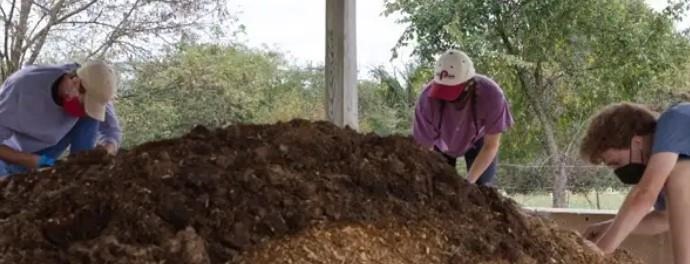By Brittaney Mann
The COVID-19 pandemic strained many poultry processing plants as employees became ill. With the help of a $1 million grant, Arkansas Agricultural Experiment Station researchers will soon begin designing robotics to help alleviate that potential strain.

ROBOTICS — Dongyi Wang is the principal investigator in a robotics project for the poultry industry. The project is funded by a $1 million grant provided jointly by the National Science Foundation and the USDA's National Institute of Food and Agriculture. (U of A System Division of Agriculture Photo by Fred Miller)
The project will be funded through a joint proposal between the National Science Foundation’s National Robotics Initiative 3.0 and the United States Department of Agriculture’s National Institute of Food and Agriculture.
Dongyi Wang, assistant professor of biological and agricultural engineering, is the principal investigator on the project. Wang conducts research for the experiment station, the research arm of the University of Arkansas System Division of Agriculture. He also has a research appointment with the food science department and a teaching appointment with the University of Arkansas’ College of Engineering.
A major focus in Wang’s lab is to understand what jobs robotic and automated systems can accomplish.
“We are trying to explore the opportunities and to see how automation can help the agriculture industry and the food industry,” Wang said.
This four-year project will lead to the development of a robotic system that can hang raw chicken as human workers do to meet the long-term needs of the poultry industry.
Poultry processing plants
In 2021, the U.S. produced 59.2 billion pounds of broiler chickens, according to the USDA. Arkansas ranked No. 3 in the nation, producing 1 billion broilers — 7.46 billion pounds of meat worth $3.97 billion — in 2021, according to the 2022 Arkansas Agriculture Profile.
Many of the steps to process chicken are already automated in processing plants, Wang said. Slaughtering and evisceration do not really rely on people. Rehanging the raw chicken is one of the major steps that relies on human work. Workers on the processing line hang the birds on conveyor lines that continue to the deboning, wing-cutting and packing steps.
Lending a hand
Besides Wang, the team includes Co-PIs, Wan Shou, assistant professor in the mechanical engineering department at the University of Arkansas, and Yu She, assistant professor in the industrial engineering department at Purdue University. Casey Owens, Novus International professor of poultry science and Philip Crandall, professor of food science, both with the Arkansas Agricultural Experiment Station, will also be involved with the research.
To create the automation system, the researchers will customize tactile sensory grippers and develop a high-resolution and high-speed 3D imaging system, Wang said. The 3D imaging system will allow the robotic arms to differentiate between the topmost chicken and the rest of the pile and will indicate the predetermined key points for chicken grasping. A key challenge is developing a gripper that reliably grasps the chicken without damaging the meat quality.
Shou will design the tactile sensors and She will design the robotic hand. By integrating these developments, robots will be enabled to adjust their grip based on how slick the surface is to ensure the bird is secure.
“Rather than buying an expensive robotic hand, we are going to design and fabricate a robotic hand with lower cost with the assistance of 3D printing,” Shou said.
Wang’s focus for this project is programming the two robots to work as human hands and complete the task of hanging the chicken without issues like the arms hitting one another.
They will test the robotics in the experiment station’s pilot chicken processing plant, with Owens overseeing the quality of meat handled by the robotic arms. The team will also use this project for opportunities in education and, with the help of Crandall, extension activities that target poultry and broader food industries.
Shou and She are excited to work on this project because of the advances they aim to make in artificial intelligence and multimodal sensing capabilities for intelligent robotic systems.
“With the new robotic system, we will generate new knowledge on mechanics and control,” She said.
Shou expressed confidence in the team to accomplish these advances.
“We have a great team to tackle the proposed project,” Shou said, highlighting the multiple disciplines the research involves, including manufacturing, sensors, robotics, mechanics, and computer vision and machine learning. “It has very promising applications for society,” he said.
Wang visualizes this project benefitting the scientific areas of tactile sensing, 3D imaging, dual robotic control and algorithms. He also sees it benefitting the poultry industry itself.
“It is very, very exciting that this kind of technology, even maybe not right now, but potentially, can help the local economic development and the local industry,” Wang said.
Source : uada.edu